What To Do With Kief: 5 Ways to Increase Profits
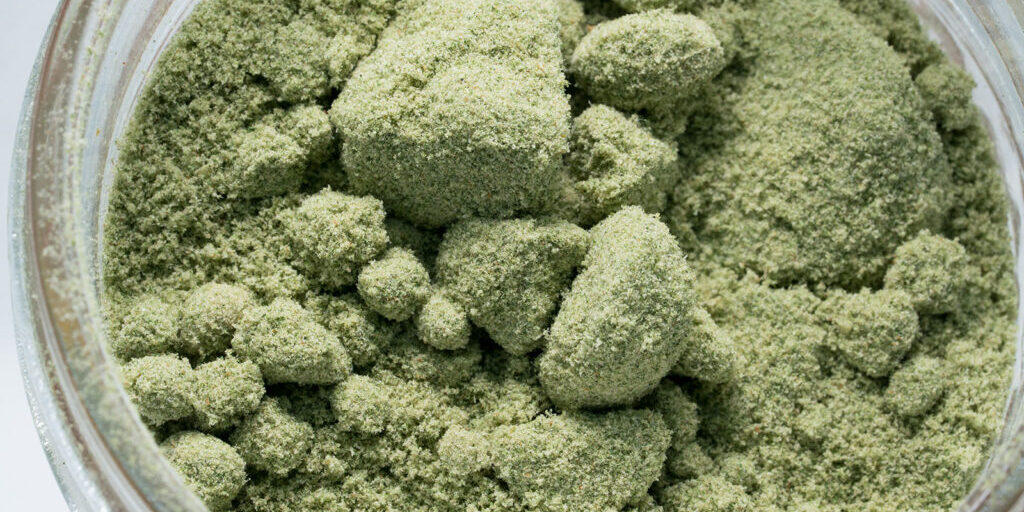
Figuring out what to do with kief isn’t just a valuable way to make the most out of your harvest; it can also provide business owners with a range of opportunities to increase their profits. As the cannabis industry continues to evolve, concentrated products like kief are gaining significant attention. According to one report, sales of concentrates increased by more than 40% in the last year.
Collecting and utilizing kief is an excellent way to grow your cannabusiness. Today, we’re going to discuss some of the benefits kief offers and provide tips for how to use it to increase your sales and profit.
What Is Kief? An Introduction
Kief is just one of the potent substances cultivators can extract from a cannabis plant. Kief is often confused with hash, but each substance has its own unique properties. Both kief and hash are comprised of trichomes, or the resin glands, of the cannabis flower. Kief simply refers to a collection of these trichomes. Hash is loose kief powder that has been compressed into a more compact and concentrated form.
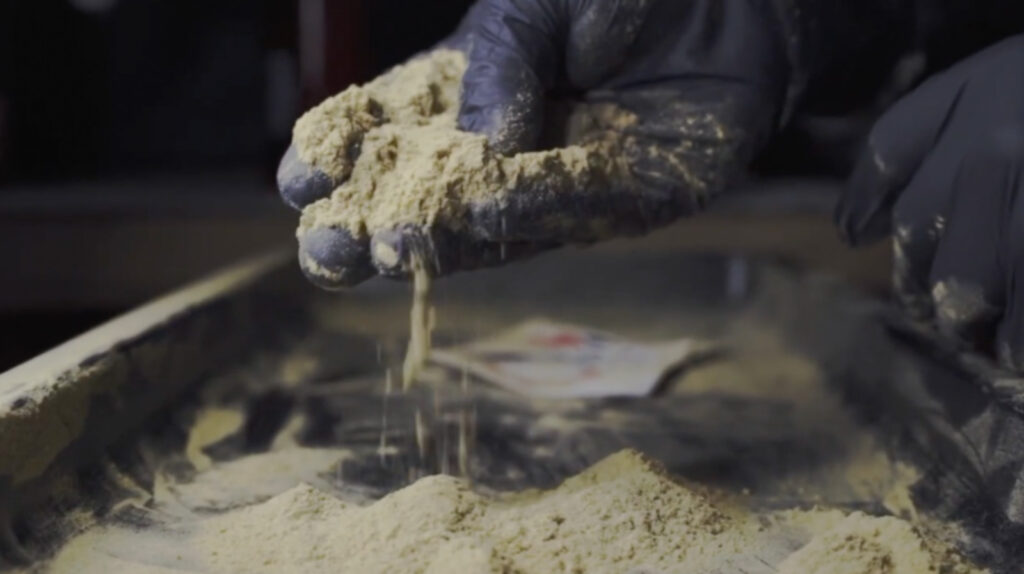
As the plant matures, its buds and resin glands develop, producing higher quantities of cannabinoids, terpenes, and other valuable compounds. When the trichomes dry and separate from the plant, they become “kief.” Kief looks like tiny golden, or brown crystals, similar to fine-grain sugar or salt. It has a slightly sticky texture at first but can dry out over time.
Kief, also called “dry sift” or “pollen,” is a highly potent product of the cannabis plant, rich in cannabinoids. However, the exact potency of any harvest can vary depending on the specific strains you grow.
Trimming and Collecting Kief
With time and agitation, kief will naturally separate from the buds of your plants without much work. However, to accelerate the collection process, most commercial cultivators will use tumblers to collect kief and preserve its potency.
When collecting kief for personal use, there are various types of tools available, with three- and four-chamber grinders being the most effective options. However, to collect kief and preserve its quality on a commercial scale, cultivators use specialized sifting boxes or tumblers.
A sifting box allows you to process a larger quantity of plant material than personal grinders. However, they are labor intensive since you manually shake the box, and they produce inconsistent results. Tumblers, on the other hand, generally have finer screens and are powered with a motor to produce consistently pure results.
One option is Triminator’s Kief Tumbler Kits, designed to be used with our Mini Dry, Dry, and XL Dry trimmers. While tumbling your dried flower in one of our trimmers, the trim falls into a collection bin, ready for further use. After trimming is finished, the standard trimming drum can easily be swapped for a 150-micron mesh drum, and the kief collector tray easily slides into place. Dry trim can be tumbled as is, or with dry ice to facilitate the trichomes separating from the plant material and falling into the catchment tray.
A Triminator trimmer and Kief Tumbler Kit facilitate near-seamless production of flower and high-quality kief on a commercial scale. The trimmer disassembles without tools using a turn-loc system, making drum swaps fast and cleanup easy. The Kief Tumbler Kit allows for the quick and accurate collection of kief from the remaining plant material after you have trimmed the flower and allows you to get more out of the plant.
What To Do With Kief: Use Options
Kief is a highly versatile product with many different uses. Depending on your business strategy, you can use it for everything from rosin pressing to creating hash. Some companies even use kief to infuse other cannabis products with more potent compounds.
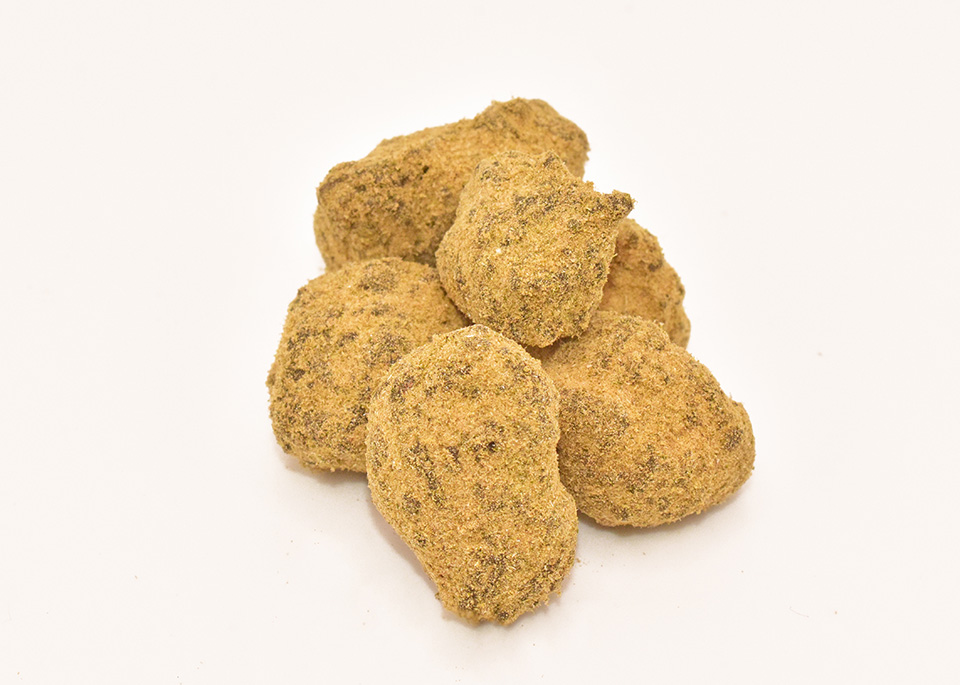
1. Make Moon Rocks
Considered the “caviar” of the cannabis world, moon rocks have earned high sale prices in recent years. They’re considered one of the most expensive ways to consume cannabis, with an average price tag of around $30-$50 per gram. However, they can be relatively easy to produce for cultivators, offering excellent opportunities for high profit margins.
Moon rocks are nuggets of cannabis flower dipped into extracts and rolled in kief. They’re typically more potent than most alternative products, averaging at around 50% potency. Creating moon rocks requires the efficient collection and use of kief.
The yield you achieve with moon rocks, as well as the return on investment, will depend on your strategy. First, cover your buds with heated cannabis oil or CBD extracts. After carefully coating each bud, sprinkle the kief over the nuggets while they’re still warm.
Creating moon rocks can be a delicate process, as it’s important not to dislodge any of the kief or the components of the bud during production. This means you may need to account for additional labor.
Best practices:
- Select a high-potency flower for the best results
- Experiment with cannabis and CBD oils
- Preserve a clean working environment to minimize contaminants
- Apply oil carefully to avoid over-absorption
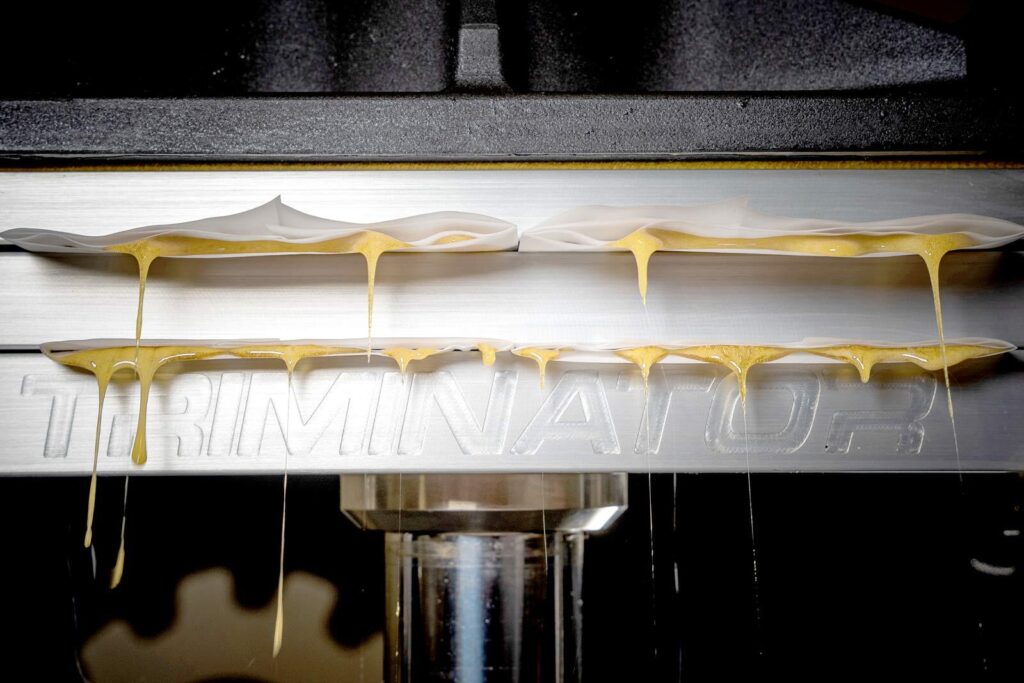
2. Press Rosin
Rosin is a form of cannabis concentrate earning significant attention in the extract category. Because no solvents are used in the rosin pressing process, the resulting substance is usually referred to as “solventless hash oil” (SHO), or solventless extract. This differentiates it from butane hash oil (BHO).
Solventless is an excellent option for processors and growers interested in creating clean, top-tier concentrates, capable of selling at premium price points. The clean living trend has increased since 2022, driving new demand for solventless solutions.
Over the last two years, rosin has seen more than a 200% increase in sales. Even boutique live rosin options have increased their value by 40%. BHO Shatters, on the other hand, has only achieved a 13% growth. Creating rosin effectively requires an investment in the right equipment and processes.
Bubble hash generally produces the highest yield for rosin, more than kief or dry sift. However, you can still use kief to create more potent rosin. Increasing your yield will require you to choose strains with the right genetics, and operate with best practices for growing and harvesting.
You’ll also need to be gentle with your harvesting process to ensure you don’t eliminate any trichomes you could extract from your plants. Rosin can be pressed directly from a cannabis flower, or squeezed from kief, using low-heat and high-pressure methods.
The best rosin should be golden in color and can be used for a variety of purposes beyond direct sales. You can also consider adding the substance to edibles and pre-rolls.
Best practices:
- Keep your rosin press temperature below 220°F
- Avoid pesticides when growing your flower
- Select strains with high-potency compounds
- Limit pressing time to between about 90 and 300 seconds. Experiment with different amounts of time and pressure to get the desired results.
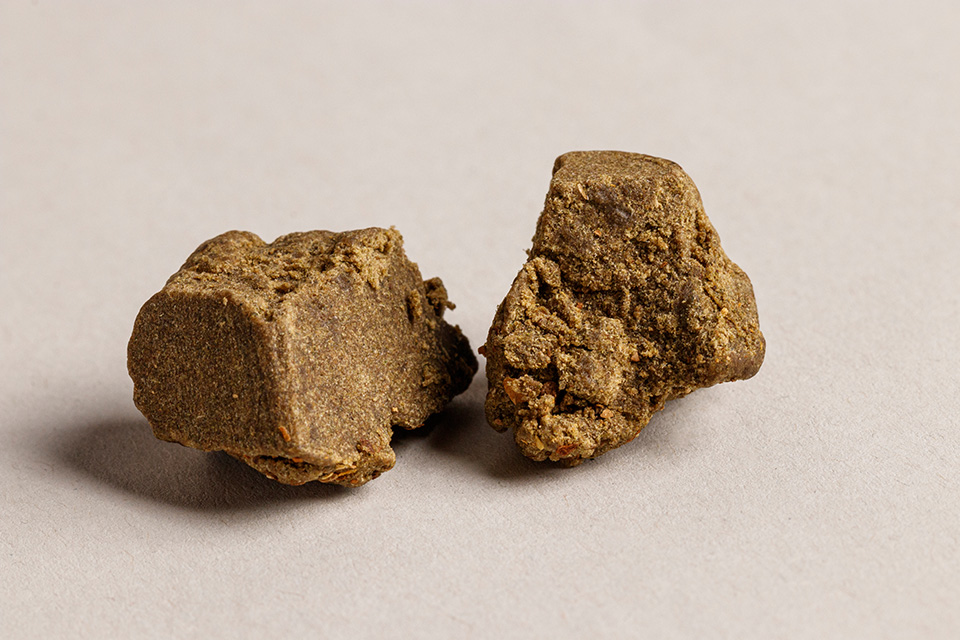
3. Make Hash
Some cannabis enthusiasts may confuse kief with hash, but they aren’t the same thing. Hash is generally more powerful than kief, due to its intensive process for extraction. This ensures higher levels of potency. Plus, it can have a richer and more complex flavor profile.
Hash is made by compressing trichomes, which brings out terpenes and leads to a deeper aroma and a unique taste. As a cannabis concentrate, hash is one of the most popular products in the current market, with sales of concentrates increasing by more than 40% in 2022.
Additionally, they accounted for a much greater amount of the cannabis market share, as consumers grew comfortable with the dabbing process. One of the core steps in creating hash involves extracting kief from cannabis plants. This kief is then heated and pressed into a small ball using carefully chosen equipment.
Although producing high-quality hash can be time-consuming, there are intelligent solutions available that make it easier to cultivate. You will need to ensure you apply heat carefully to the packed kief, or you could risk burning your product.
Choosing the right flower will be crucial too. You’ll need about 10 grams of kief to create a single gram of hash. The actual amount of kief required varies depending on the potency of the strain, and the desired components of the final product.
Best practices:
- Avoid high temperatures, which might damage potency
- Choose high-potency plants
- Leverage equipment to scale processing
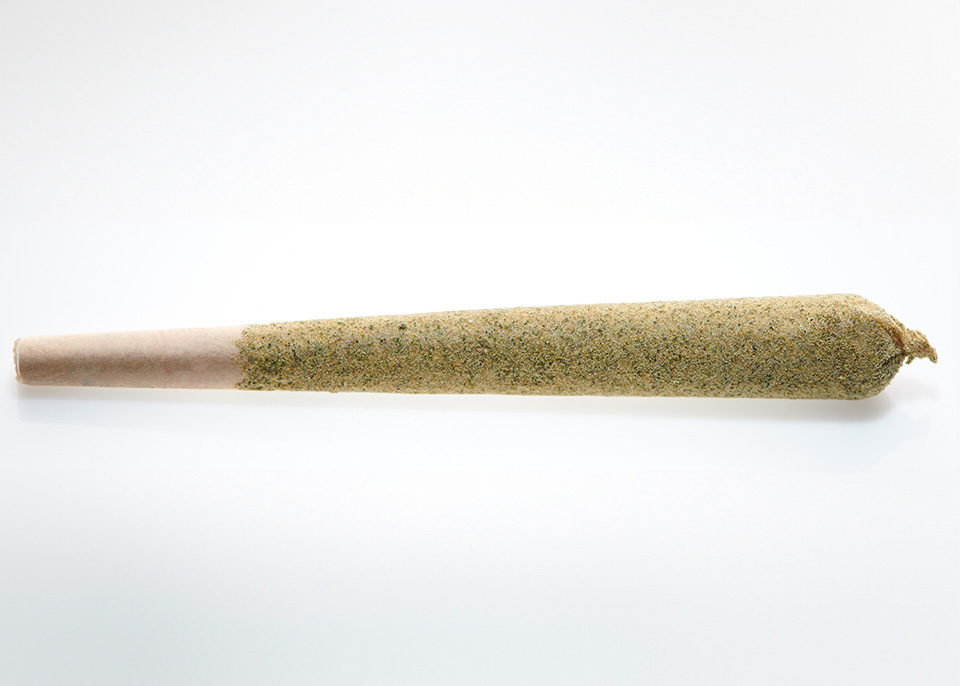
4. Add to Pre-Rolls
Consumers are constantly searching for convenience and simplicity. As a result, the demand for pre-roll products has increased dramatically in recent years. According to one report examining the trends in the US and Canada, consumers in both markets spent over $725 million on pre-rolls between January and June 2022.
During this same period, pre-rolls made up the second largest product category for all Canadian growers, at around 24.1%, falling just behind direct flower sales. They were also the third largest product category in the US, behind flower and vape pens.
Creating pre-rolls with kief provides growers with a range of opportunities to diversify their product line. Infused variations of pre-rolls with additional CBD or flavor profiles have significantly contributed to the market’s growth. Infused pre-rolls made up 41.5% of all sales for the first half of 2022 in the United States.
Adding Kief to pre-rolls is an excellent way to make your yield extend much further. As a standalone product, kief will not deliver the best smoking experience, as it burns a lot faster than the flower, and lacks the compounds required for a consistent smoke.
Adding kief to pre-rolls, by simply sprinkling it into the mix before the rolls are created, is a quick and easy way to increase the potency of rolled products with minimal effort. However, the right rolling equipment is necessary to drive the best results.
Best practices:
- Experiment with different strains and infusions
- Ensure consistency when adding kief to each pre-roll
- Choose the right paper and cone size
- Ensure a fine grind without too many large chunks

5. Mix It With Edibles
Finally, just as adding kief to pre-rolls can help diversify your product collection, using this potent substance to create edibles can also be extremely valuable. Studies show that smoking has decreased in the last few years while ingesting and vaping cannabis has increased.
In particular, the edible market appeals to those in search of a micro-dosing, or a more subtle experience. As consumer trends evolve, the cannabis-infused edible products market is expected to grow from a value of $9.68 billion in 2023 to around $20.6 billion by 2028.
As a relatively concentrated form of cannabis, kief can deliver excellent potency in edible products, when implemented in small amounts. It can also deliver a more pleasant taste in the edibles overall, with fewer plant-like flavors than other production methods.
For cultivators, using kief to create edibles offers an opportunity to explore a wide range of product options. You can sprinkle kief into coffee and tea products or other hot beverages. This substance naturally decarboxylates when added to boiling water, so it doesn’t need to be heated or placed into an oven before use.
Another option is to use kief to create cannabutter, which can be used to produce a variety of baked goods, such as brownies and cookies. As in most cases, the yield and potency of your kief-based edible products will depend heavily on the strain you choose and your collection process.
Best practices:
- Avoid heating kief before adding it to products like tea (where it will decarboxylate on its own). Otherwise, remember to decarboxylate your cannabis before mixing it in.
- Select a high-quality flower with strong potency
- Strain any plant matter and mix the substance well
Using Kief: Quality Control and Testing
Just like any component of the cannabis plant, kief can go bad over time. It’s a natural substance that will oxidize, dry out, and react to both heat and moisture. This is why it’s so important to maintain a consistent strategy for quality control and testing.
You can use tools like high-performance liquid chromatography and gas chromatography-mass spectrometry to test the potency and purity of your kief products. Make sure you adhere to industry standards and regulatory guidelines to keep your kief safe for consumption.
It’s also important to store and package your kief products carefully to minimize the risk of lost potency or quality. Generally, it’s best to store kief and related products in airtight containers or vacuum-sealed packaging to help maintain optimal conditions. Remember, the right size for your container or package is crucial. Even if there’s no air flowing into your container, excess oxygen caught in the jar can impact the flavor and quality of your product. Find a container that can hold your product easily without crowding or extra space.
Avoid storing your product in a refrigerator or freezer, as it could harm the trichomes. Instead, stick to a cool, dark, and controlled space for short-term storage, and keep your products away from light, heat, and moisture.
The Rising Value of Kief Products
Learning what to do with kief is an excellent way to increase the profitability of your cannabusiness. In regions around the world, infused pre-rolls, and other products made with kief are capturing significant attention, which allows you to make the most out of every aspect of your harvest.
At the beginning of 2022, the demand for kief rose significantly, thanks to changing customer preferences, and rising interest in pre-rolls, infused products, and potent extracts. In fact, according to the Canadian Cannabis exchange, kief prices have risen from $0.34 (CAD) per gram in 2021 to around $1.91 (CAD) per gram in the last year.
Investing in finding new ways to use your kief will allow you to diversify your product portfolio and reach a wider range of customers in the evolving cannabis market. You may also find you have more opportunities to differentiate yourself from other brands. The more you experiment with new product options, from pre-rolls to edibles, the more your market presence will grow.
Make the Most of Your Kief
In the cannabis industry, making the most out of every aspect of your harvest is crucial to success. Not only will it help you to minimize waste and lost opportunities, but it will also give you a way to increase your profits and capture the attention of new customers.
Kief is a valuable substance in the cannabis industry, offering both versatility and profit potential. Its applications range from enhancing everyday smoking experiences to creating potent concentrates and infusions.
Collecting kief on a commercial scale is simplified with the addition of a Kief Tumbler Kit to your Triminator trimmer. With easy drum swaps, your trimmer takes on double duty, producing not just perfectly trimmed flower and high-quality trim, but also allowing for an easy collection of kief. Cannabusinesses that take this extra step of producing kief greatly expand their product offerings as easily as switching out a drum.
Discover how Triminator can help you derive more value from every harvest, whether you’re collecting kief, creating pre-rolls, or making your own high-quality hash. Contact us to find out more about our line of commercial cannabis machines and accessories.
Like what you read?
Get more insider industry knowledge sent right to your inbox
"*" indicates required fields